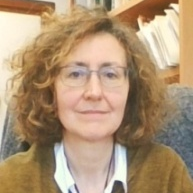Soil Erosion, Soil Desertification and Soil Conservation in Agri-Environment Systems
A special issue of Water (ISSN 2073-4441). This special issue belongs to the section "Water Erosion and Sediment Transport".
Deadline for manuscript submissions: closed (3 November 2020) | Viewed by 23979
Special Issue Editors
Interests: erosion; simulated rainfall; soil degradation; cover crops; soil management; land use; olive grove; vineyard
Special Issue Information
Dear Colleagues,
A warming trend is expected over the next decades. The experience gained in sustainable dryland management can be used to improve adaption to new scenarios of drought and rainfall extreme events. Agricultural land is especially vulnerable to these changes. The way in which land management practices have increased soil organic matter, water retention, and soil biodiversity are considered valuable evidence to be used as tools to face future soil degradation.
This Special Issue is aimed at gathering practical experiences and traditional or new techniques in agricultural fields to control chemical, physical, and biological degradation, including erosion from plot to landscape scales. Studies on reduced tillage, cover crops, organic amendments, or strategies to improve soil biodiversity can contribute to updating the state-of-the-art of agricultural soil conservation. This Special Issue also has the opportunity to show added benefits of sustainable land management practices for mitigation of climate change through carbon sequestration in soils and other sustainable development goals related to land and water conservation.
Dr. Ramón Bienes
Dr. María José Marqués
Guest Editors
Manuscript Submission Information
Manuscripts should be submitted online at www.mdpi.com by registering and logging in to this website. Once you are registered, click here to go to the submission form. Manuscripts can be submitted until the deadline. All submissions that pass pre-check are peer-reviewed. Accepted papers will be published continuously in the journal (as soon as accepted) and will be listed together on the special issue website. Research articles, review articles as well as short communications are invited. For planned papers, a title and short abstract (about 100 words) can be sent to the Editorial Office for announcement on this website.
Submitted manuscripts should not have been published previously, nor be under consideration for publication elsewhere (except conference proceedings papers). All manuscripts are thoroughly refereed through a single-blind peer-review process. A guide for authors and other relevant information for submission of manuscripts is available on the Instructions for Authors page. Water is an international peer-reviewed open access semimonthly journal published by MDPI.
Please visit the Instructions for Authors page before submitting a manuscript. The Article Processing Charge (APC) for publication in this open access journal is 2600 CHF (Swiss Francs). Submitted papers should be well formatted and use good English. Authors may use MDPI's English editing service prior to publication or during author revisions.
Keywords
- Erosion
- Runoff
- Erosion control
- Soil degradation
- Soil conservation
- Land use
- Soil organic carbon
- Carbon sequestration
- Cover crops
- Soil management
- Agri-environmental systems
Benefits of Publishing in a Special Issue
- Ease of navigation: Grouping papers by topic helps scholars navigate broad scope journals more efficiently.
- Greater discoverability: Special Issues support the reach and impact of scientific research. Articles in Special Issues are more discoverable and cited more frequently.
- Expansion of research network: Special Issues facilitate connections among authors, fostering scientific collaborations.
- External promotion: Articles in Special Issues are often promoted through the journal's social media, increasing their visibility.
- e-Book format: Special Issues with more than 10 articles can be published as dedicated e-books, ensuring wide and rapid dissemination.
Further information on MDPI's Special Issue polices can be found here.






